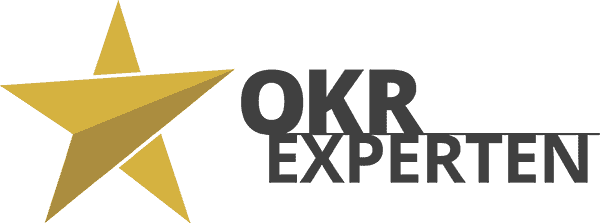SWOT analysis
SWOT analysis is a widely used approach for strategic planning and decision-making in companies, organizations and even for personal development. It involves assessing the strengths, weaknesses, opportunities and risks of a particular unit or situation.
By conducting a SWOT analysis, individuals and organizations can gain a better understanding of their current situation, identify potential areas for improvement or growth, and make informed decisions about future strategies and actions.
SWOT analysis briefly explained
The acronym SWOT stands for Strengths, Weaknesses, Opportunities and Threats.
Each aspect briefly summarized:
- Strengths: Strengths are internal factors that give an organization or an individual a competitive advantage, e.g. employees with versatile skills.
- Weaknesses: Weaknesses are internal factors that hinder a company’s or person’s ability to compete. For example, inefficient communication concepts.
- Opportunities: Opportunities are external factors that can give a company or an individual a competitive advantage. These include changing trends, for example.
- Risks/threats: Threats are external factors that can have a negative impact on the competitiveness of a company or an individual.
The four aspects are examined in more detail below.
Strengths
The “strengths” aspect of the SWOT analysis refers to the internal factors that give an organization or individual a competitive advantage. Identifying and analyzing strengths is important to understand what an organization or individual does well and what differentiates them from their competitors.
Strengths can include the following factors, among others:
- unique skills
- Valuable assets
- an established brand reputation
- a loyal customer base
- a strong financial position
- any other internal factor of advantage
When companies and individuals know their strengths, they can seize opportunities, overcome weaknesses and position themselves for success. In addition, focusing on strengths can boost morale and self-confidence. This can lead to higher motivation and productivity.
Weaknesses
Identifying and analyzing a company’s weaknesses is an important factor. It determines in which areas there is a need for improvement and where there could be weaknesses compared to competitors.
Vulnerabilities may include the following internal factors:
- limited resources
- Lack of specialist knowledge
- a bad reputation of the brand
- outdated technology
- low employee morale
- other internal factors that represent a disadvantage.
If individuals and companies are aware of their weaknesses, they can take steps to address them, such as investing in training, technological improvements or restructuring their processes. If weaknesses are not remedied, this can lead to missed opportunities or even failure in the competitive market.
Opportunities
The “opportunities” aspect of the SWOT analysis focuses on external factors that can be used to the advantage of a company or an individual. This aspect deals with the identification and evaluation of potential growth areas in the market.
For example, the following are observed:
- Emerging markets
- Changes in consumer behavior and trends
- Technological progress
- Changes in government policy
- other external factors that constitute an advantage
Opportunities can arise in a variety of forms. It is therefore important to remain vigilant and adaptable in order to use them effectively. By analyzing opportunities, individuals and organizations can identify areas that can be improved. In these areas, they can expand their reach, diversify their offering or gain a competitive advantage over their rivals. It is important to approach opportunities strategically and with a long-term perspective in order to ensure sustainable growth and success.
Risks (Threats)
The “risks” aspect of the SWOT analysis refers to external factors that could have a negative impact on the competitiveness of a company or individual.
Threats can take many forms, for example as:
- Economic downturn
- Changes to industry regulations
- new competitors
- pioneering technologies
- Natural disasters
- other external factors that pose a risk or challenge
In order to understand potential risks to a company’s operations, reputation or financial position, it makes sense to identify and analyze threats. By understanding risks, individuals and organizations can take steps to mitigate them. An example of this would be the development of contingency plans or the diversification of activities to reduce vulnerability to a single point of failure.
It is important to remain vigilant and adaptable in the face of threats. This allows you to stay one step ahead of the changing market conditions caused by the VUCA/BANI world and maintain a competitive advantage.
Strategies of the SWOT analysis (combined SWOT matrix)
The combined SWOT matrix is a popular strategy in SWOT analysis that combines an organization’s internal and external factors to develop effective strategies. This approach combines the strengths and weaknesses of an organization with the opportunities and threats of the external environment. In this way, individuals and organizations can develop a comprehensive understanding of their current situation. Building on this, they can develop strategies that utilize their strengths and at the same time eliminate their weaknesses.
To create a combined SWOT matrix, the internal strengths and weaknesses of the organization must be determined. These include financial stability, talented employees or an inadequate infrastructure. The next step is to identify the external opportunities and threats/risks that could affect the organization. As mentioned above, these can be new markets, changes in legislation or increased competition.
The identified factors are summarized in a matrix that visualizes the relationships between the various factors. The matrix is divided into four quadrants, each representing a different combination of internal and external factors:
- Strengths-Opportunities (SO)
- Strengths-Threats (ST)
- Weakness opportunities (WO)
- Weakness threats (WT)
Analyzing each quadrant of the matrix enables the development of strategies that leverage strengths and opportunities while addressing weaknesses and mitigating potential threats. A company with a strong financial position (strength) can grow by investing in emerging markets, for example (opportunity). (opportunity) to expand its business. Similarly, a person with limited technical skills (weakness) may choose to take advantage of training opportunities (opportunity) to position themselves for career advancement.
Overall, the combined SWOT matrix is a powerful tool for developing effective strategies that allow you to leverage strengths and capitalize on opportunities while minimizing the impact of weaknesses and threats. By creating a comprehensive understanding of the situation, strategies can be developed that are well-informed, effective and tailored to individual needs and goals.
We support you in the introduction of OKR, in OKR training and in optimizing the use of OKR in your company.
Carry out a SWOT analysis: SWOT example
If you are looking for a comprehensive and effective way to assess your personal or business situation, conducting a SWOT analysis is a good place to start. This approach examines the internal strengths and weaknesses of your company as well as the external opportunities and threats you may face. By conducting a thorough SWOT analysis, you can identify the areas in which you are particularly good and those in which you need to improve. You will also gain a better understanding of your business environment so that you can exploit potential opportunities and avoid possible risks. The following section uses a real SWOT example to show you how this analysis can be carried out and applied.
Two of the matrix fields are always considered in combination.
Strengths + opportunities: Expand! (the SO strategy)
The SO strategy (Strengths-Opportunities) as part of the SWOT analysis consists of identifying the internal strengths of a person or company and using them to exploit external opportunities. By identifying areas of expertise and assessing potential growth areas in the market, strategies can be developed to capitalize on these strengths and explore new opportunities. For example, if a company has a unique product or service that is in high demand, it can find ways to expand its reach into new markets or customer segments. Similarly, a person with unique skills can find new ways to market themselves or expand their offering. The SO strategy can represent a significant competitive advantage and is an effective means of achieving long-term success.
Strengths + risks: Hedging! (the ST strategy)
The ST strategy (Strengths-Threats) is an important aspect of the SWOT analysis, which is about using internal strengths to mitigate external threats. This approach helps individuals and organizations to identify potential risks in their business environment and develop strategies to minimize their impact. For example, a company with a strong financial position can use this strength to mitigate the effects of an economic recession. Similarly, a person with strong technical expertise can use this strength to mitigate the impact of disruptive technological change. By effectively using their strengths to counter potential threats, individuals and organizations can reduce the negative impact of external factors on their operations and maintain a competitive advantage.
Weaknesses and opportunities: Catch-up strategy (WO strategy)
The WO (Weaknesses-Opportunities) strategy in the SWOT analysis involves identifying weaknesses and using external opportunities to eliminate them. By focusing on areas for improvement and evaluating potential growth opportunities in the marketplace, individuals and organizations can develop effective strategies to turn weaknesses into strengths. For example, a company that is struggling with low brand awareness can use new marketing channels to raise its profile and attract new customers. Similarly, a person with limited networking skills can use opportunities such as industry events or online forums to build connections and expand their professional network. The WO strategy enables individuals and organizations to identify areas where they can improve while leveraging external opportunities to address these weaknesses and achieve their goals.
Weaknesses and risks: Avoid strategy (WT strategy)
The WT strategy (weaknesses/risks) is a part of the SWOT analysis that involves eliminating internal weaknesses to mitigate external threats. This approach helps individuals and organizations to identify vulnerabilities and develop effective strategies to minimize the impact of potential threats. For example, an organization with a weak financial position can address this weakness by reducing expenses and diversifying revenue sources to mitigate the impact of economic recessions or downturns. Similarly, an individual with limited access to capital can mitigate financial risk by utilizing alternative financing options such as grants or crowdfunding. By addressing internal weaknesses and minimizing the impact of external threats, individuals and organizations can position themselves for long-term success and resilience in the face of challenges. The WT strategy can be an effective way to protect against potential threats and maintain a competitive advantage in the market.
Application of OKR with SWOT
OKR (Objectives and Key Results) is a framework for strategy implementation and goal setting. It helps companies and organizations to ensure that strategies created, for example, through a SWOT analysis are consistently implemented and that implementation is tracked in a measurable way.
The combination of SWOT and OKR (Objectives and Key Results) is an effective way for individuals and organizations to align their strategic goals with their internal and external factors. OKR is a goal-setting system that enables individuals and organizations to set ambitious and measurable goals and track their progress towards achieving them. In combination with SWOT analysis, OKRs can help companies develop goals that leverage their strengths, address their weaknesses and exploit opportunities while minimizing the impact of potential risks.
For example, a person may identify a weakness in public speaking (W) and recognize an opportunity to improve their communication skills by attending a workshop (O). By combining this with her existing strengths, such as strong analytical skills (S), she can develop an OKR set to improve her speaking and communication skills.
Similarly, an organization may identify a weakness in its social media presence (W) and an opportunity to engage with customers via social media platforms (O). By combining this with existing strengths, such as a high-quality product (S), an OKR can be developed to improve social media presence and engage with customers on these platforms. This leads to measurable results, such as an increase in followers on social media or an increase in customer engagement on social media.
By integrating the SWOT analysis into OKR, it is possible to ensure that a company’s objectives and strategies are based on a comprehensive understanding of its internal and external factors. In this way, more informed decisions can be made and proactive steps taken to achieve their goals, while minimizing the impact of potential threats. Ultimately, the combination of SWOT and OKR can help to achieve long-term success and resilience in the face of challenges.
OKR can help in various ways to ensure that the strategies or measures created by a SWOT analysis can be implemented:
Clear objective:
By using OKR, clear and measurable goals can be defined – aligned with the strategies and measures that emerged from the SWOT analysis. OKR ensures a common understanding and a clear direction within the company and thus ensures that the objectives are clearly defined and understood.
Accountability and transparency:
OKR also ensures transparency and accountability by clearly defining who is responsible for which goals and results. By making OKR sets publicly visible, everyone in the company can see who is responsible for implementing the strategies and measures and how successfully implementation is progressing.
Regular review and adjustment:
OKR supports the continuous review and, if necessary, adjustment of the strategies and measures to be implemented. Regularly reviewing progress and results aligned with goals and strategies helps to identify bottlenecks and make necessary adjustments. This ensures that the strategies and measures are implemented successfully.
In summary, OKR can help to ensure that the strategies and measures created through a SWOT analysis are implemented. This is achieved by setting clear and measurable targets, creating accountability and transparency and continuously reviewing and adapting implementation. Ultimately, the combination of SWOT and OKR can ensure long-term success and resilience in the face of challenges.





